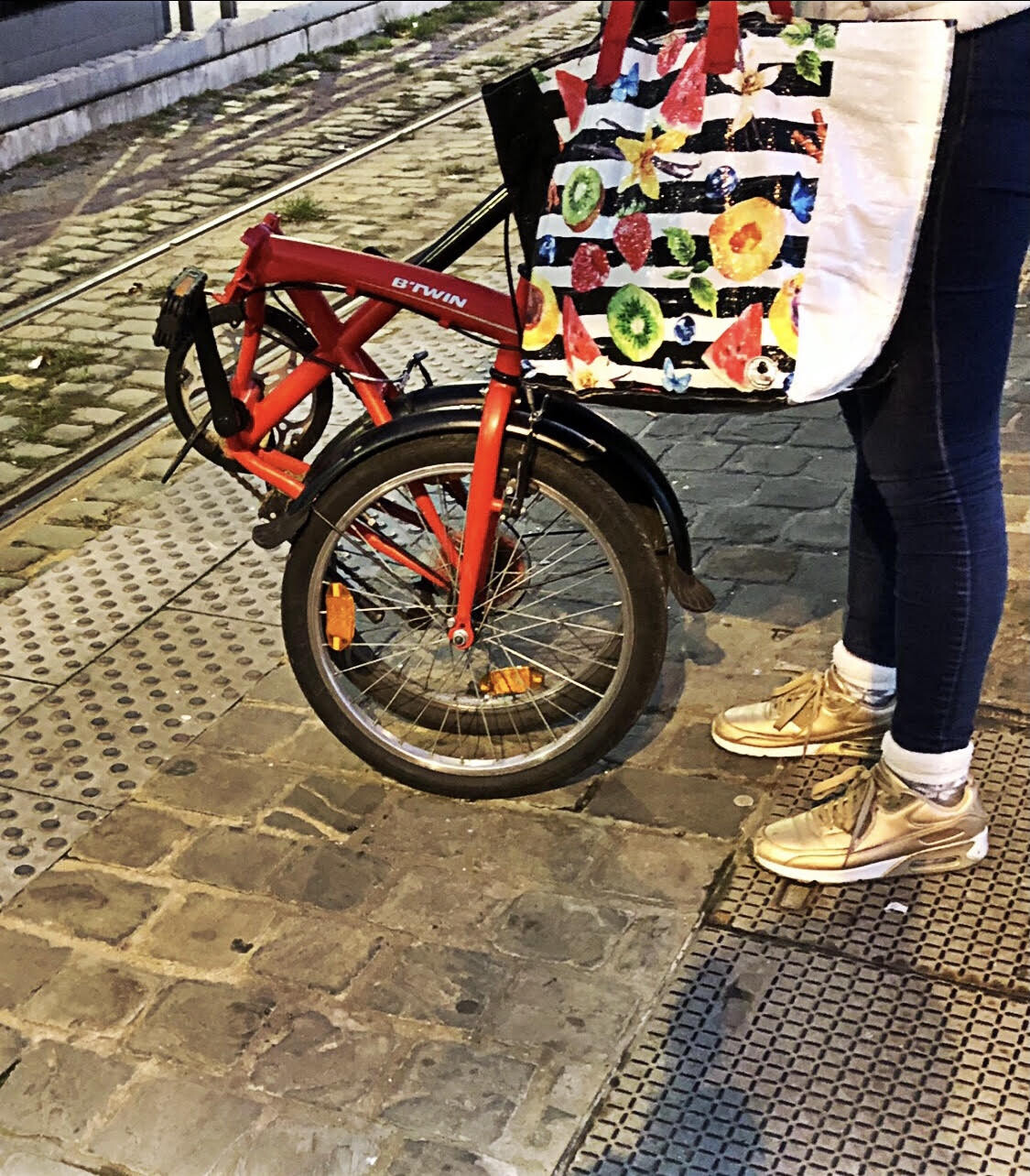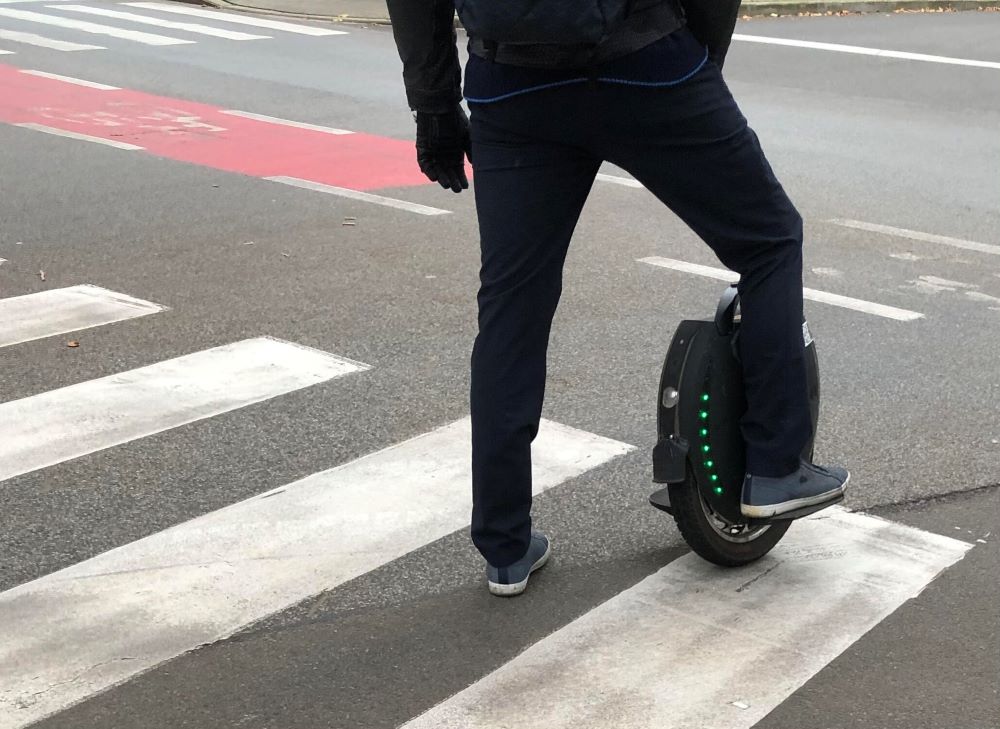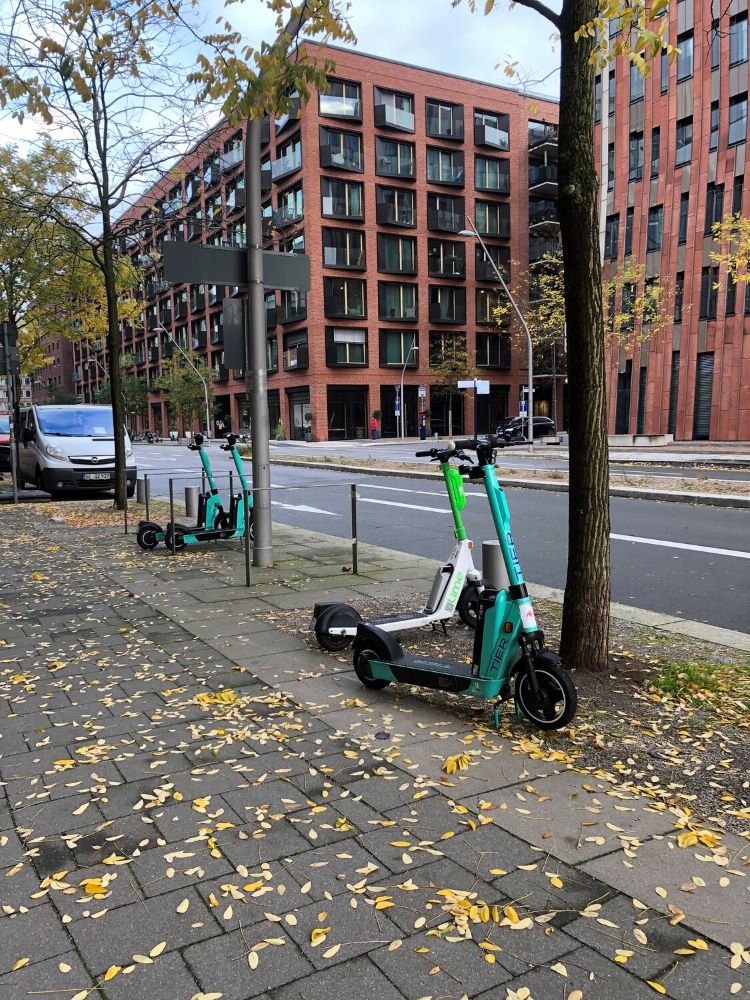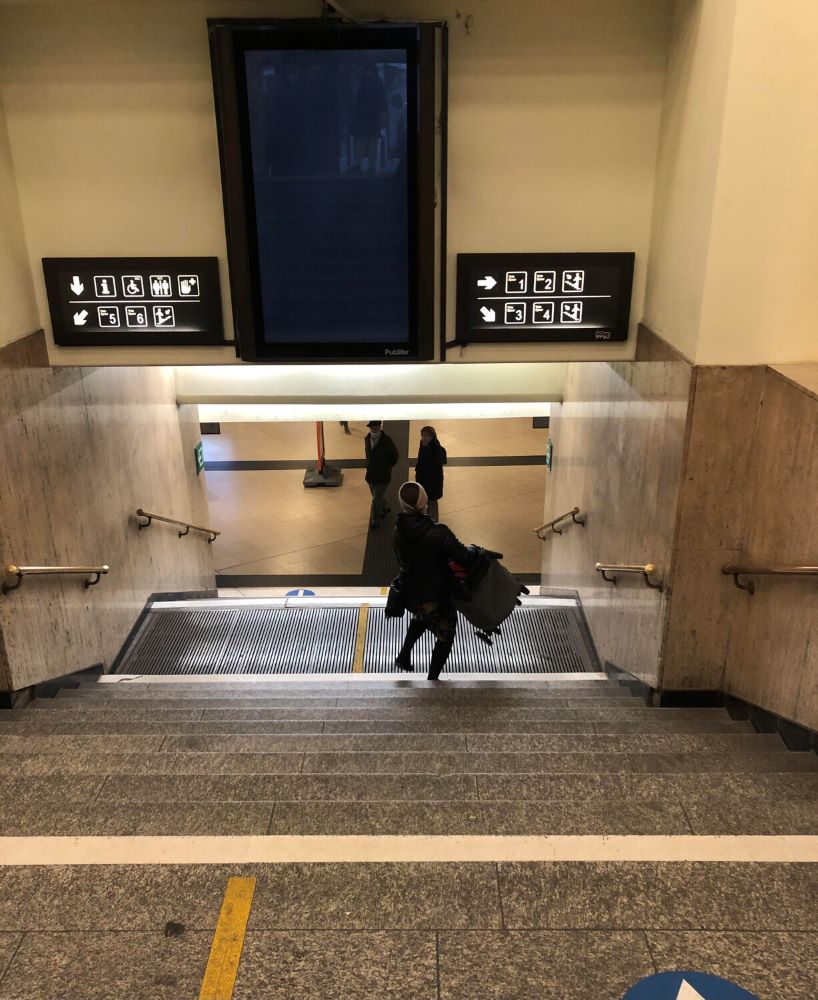The Netherlands
With a largely flat terrain across the country, the Netherlands is a global leader in cycling culture. The nation has invested in clearly demarcated cycling lanes. Cycling is generally encouraged with everyone from the prime minister and queen to the citizenry using it. Of course, one upside is you cannot sleep on the wheel. Bicycle varieties have also been developed to allow for parents to carry children, people to carry their pets, and even movement of large goods in carriages which are mostly placed at the front of the bicycles, where the user has greater control..

Foldable bikes are also available for ease of transportation when the need arises to board a train from one city to the next or one locale to another (see image on the left). In terms of train transport, while there are several lines towards the north of the country, these taper out towards the south with reportedly only two lines leading onwards to Maastricht (the southernmost town bordering Belgium and Germany). This is especially important because when one line experiences an interruption, this can cause delays ranging from thirty minutes to three hours. Recent delays are triggered by a spike in cases of suicides on the tracks.

The problem is complex because there are several points along the railway line without barricades, which is logical because motorists on the road sometimes need to cross the train tracks to get to their destinations and only minimal barriers can be put in place in such instances. Sometimes this accessibility can lead to challenges where a car and tram end up on the same path (see image on the right, The Hague), but these are often amicably resolved. Public transport is also more keenly monitored in the Netherlands than in neighboring states (as we will see later in this article). For example an official being present within some trams in Amsterdam.
Germany
With the second largest population in Europe after Russia, Germany is a hub of economic and social life. The country has however taken a more laissez-faire approach to public transport compared to its neighbors with fewer systems monitoring payment of train tickets etc. Several explanations have been put forward, including the agreeable attitude of people towards adhering to regulations, with a second argument citing that the presence of CCTV cameras is a deterrent against free riding, however without the check-in and check-out machines prevalent in their neighboring states, it becomes difficult to see exactly how this system is maintained.

The use of scooters was also more visible here, for example a one-wheel self-balancing scooter (see image on the left). There is also the option to book a scooter under public sharing schemes (see image below, Hamburg). A simple search on Google Maps could point you to the nearest scooter-sharing pickup point. One may also notice that each city/country has its own variety of publicly shared bicycles/scooters.

Belgium
Soon after arriving in Belgium, I was informed that it is not peculiar for a bus or train to run late. I however experienced only a few delays, and was able to generally arrive at my destinations on time. What struck me was the experience of a passenger at the Brussels Centraal Station who was descending the stairs in front of me and had to carry a child and stroller down the stairs (see image below, Brussels). While I do imagine there could have been an elevator somewhere, it was not immediately clear where.

Luxembourg
Since 2020 the Grand Duchy of Luxembourg has taken its place in history by operating a nationwide free public transport system, with few exceptions. The trains are remarkable at best, and operate on schedule (see video below).
The nation, with a small population at the heart of Europe, is still however accustomed to use of private cars. Conversations with some friends revealed some causes for this. First is the convenience of having one’s own vehicle with which to move from town to town. Noting that it took me one and a half hours by public transport to travel from Luxembourg Passarelle to Biodiversum in Schengen, a journey that would take a private car a little over thirty minutes. Second, is the nature of people working in Luxembourg, with the country known for its good compensation schemes, thereby attracting people who work there but live in other countries. This is especially common for people living in Belgium where rent is comparably lower than in Luxembourg. Also recognizing that with higher wages, the cost of refueling private cars is manageable.
Final thoughts:
From the enhanced cycling system in the Netherlands, to the flexible public transport system in Germany, it became clear to me that different countries have made an effort to fine tune the mode of transport to the needs of the population. In the case of Belgium there are areas that need tightening, while Luxembourg has delivered what many people would hope for in other countries, but with a less enthusiastic reception at home. Like any other policy challenge, all steps of the policy process are important from agenda setting to policy formulation, implementation and eventual monitoring and observation. Is the free transport system a success? Can it lead to more efficient outcomes of lower emissions from individual private cars? How all this plays out in light of recent EU commitments towards energy efficiency is to be seen. There are certainly models of learning for other countries, with sober understanding of unique local challenges and solutions.

